Clancy Tucker's Blog, page 159
March 5, 2018
6 March 2018 - JAMES REYNE

JAMES REYNE
G'day folks,
Welcome to some background on a well known Aussie singer and song writer.
I just feel that I’m getting better,” James Reyne says. “I’m a better singer and a better songwriter.”
It’s a simple statement, but also remarkable – considering that this is an artist who has sold more than two million albums and written some of the most memorable Australian songs of all time.
But as critic Ed Nimmervoll – who has followed James’ career since it started – remarked when he reviewed James’ 2012 album, Thirteen: “He’s a better singer today than ever, better songwriter, better lyricist. Every track on Thirteen tells you how important all three of those aspects of his craft are to him.”
James Reyne’s songs have provided the soundtrack to endless Australian summers, including “The Boys Light Up”, “Reckless”, “Beautiful People”, “Lakeside”, “Daughters Of The Northern Coast”, “Fall Of Rome”, “Hammerhead”, “Motor’s Too Fast” and “Slave”.
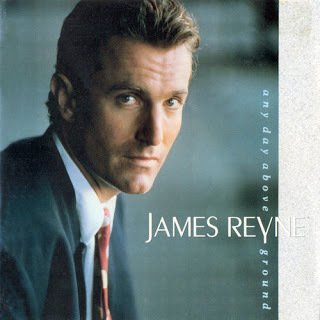
James has been a part of our lives since making an unforgettable debut on Countdown in 1979, with both arms in plaster (the result of being hit by a car, crossing Swanston Street in Melbourne).
“Lucky for the Australian music industry that James Reyne chose to strut through its door in 1979,” Wendy Milson and Helen Thomas wrote in their 1986 book Pay To Play. “His was exactly the profile … an injection of chutzpah to recharge a listless business burdened with hard-to-market punk acts.”
In her 1992 book Your Name’s On The Door, Tracee Hutchison noted that Australian Crawl “boldly explored an ‘Australian-ness’ that was unique at the time and which broke a lot of ground in the development of an Australian ‘sound’.”
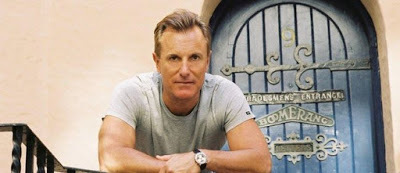
As Ed St John declared in the liner notes for Australian Crawl’s farewell album, The Final Wave, “They had a distinctively Melbourne twang that recalled the sounds of many of that city’s great bands – Skyhooks, Jo Jo Zep and The Sports – whilst also stating a youthful, sexy confidence that was all their own.”
James was a member of Australian Crawl for seven years, releasing four studio albums in five frenetic years in the ’80s. He’s been a solo artist for the past 28 years, releasing eight studio albums, plus two acoustic collections, a covers album and two live albums.

Thirty years after it was released, Australian Crawl’s debut album, The Boys Light Up, was featured in The 100 Best Australian Albums. “Australian Crawl would never have gone much beyond their living rooms on Victoria’s Mornington Peninsula,” the authors noted, “had it not been for singer/songwriter James Reyne … a keen observer of human nature and a man with a vitriolic wit.”
James’ distinctive diction has also attracted attention. Semantics producer Mark Opitz says: “No one else sings like James Reyne. He is unique, and you don’t want to lose that.” While Ed Nimmervoll says it’s a voice “as familiar to us as the taste of Vegemite, as essentially Australian”.
Australian Crawl sold more than one million albums in Australia, placing four albums in the Top 5, including 11 weeks at number one.
Only four local bands – Skyhooks, The Seekers, Savage Garden and Midnight Oil – have spent more time on top of the Australian albums chart.
James’ songs have been covered by Paul Kelly and John Farnham, and he’s had 19 Top 40 hits (seven with Australian Crawl, 12 solo) and 10 Top 10 albums.
Critic Craig Mathieson wrote about the enduring appeal of the chart-topping “Reckless” in his 2009 book Playlisted, calling it “as haunted and impervious an Australian classic as you will ever hear”.
But James has never been interested in accolades or awards. His most treasured musical possession is not a Countdown Award or a platinum album; it’s a photo with John Lee Hooker (the blues legend and James were both signed to the same US label in the ’90s).

Australian Crawl defiantly did things their own way. As the Rolling Stone editorsexplained in 1985’s The Big Australian Rock Book, “Australian Crawl has become a major fixture of the Australian music industry without ever really becoming a part of it.”
James Reyne continues to do things his own way.
“Regrets, you know I’ve had a few,” he confessed on Thirteeen, “but I don’t sweat ’em.”
“James is his own worst enemy,” younger brother David says, “and I’m proud of him for that. He’s unbelievably uncompromising, and all that matters to him is recording, writing and performing.”
“Any day above ground is a good day,” James observed on his third solo album. And every day, he is scavenging, foraging, searching, observing … confident that the next song he writes will be his best.

Clancy's comment: Go, James!
I'm ...
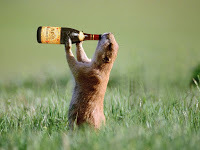

Published on March 05, 2018 12:11
March 4, 2018
5 March 2018 - SOME FACTS ABOUT BULLFROGS
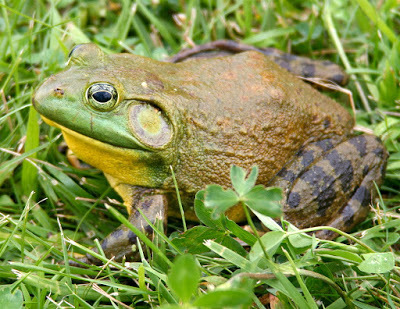
SOME FACTS ABOUT BULLFROGS
G'day folks,
I recently landscaped my garden and found 11 frogs along the way, but none the size of a bullfrog.
The bullfrog is one of the most widely distributed frogs across the North American continent. The bullfrog is a medium-sized frog that is best known for its loud cow-like calls, hence its name.
Bullfrogs are found in a wide range of permanent freshwater habitats including ponds, swamps and lakes where the bullfrog tends to prefer to be closer to the banks rather than out in the open water. Bullfrogs also prefer to be in warmer climates rather than the cooler ones.
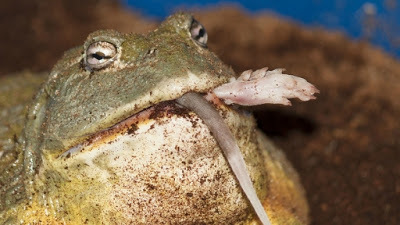
Today bullfrogs are being more and more commonly kept as pets and are even eaten by locals in some of the more southern regions of North America.
Bullfrogs have also been introduced to other countries throughout the world where they have generally had a devastating impact on the local ecosystems. Bullfrogs are carnivorous animalsand bullfrogs have a dietthat is meat-based. Bullfrogs are nocturnalhunters, hiding and resting during the day and actively hunting by night. Bullfrogs hunt a variety of insectsand their larvae, eggs, spiders and even small fish. Some of the larger bullfrogs, today found in South Korea, have been even known to eat small snakes.
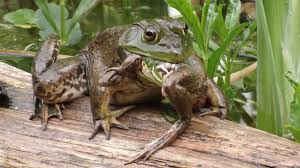
Due to the relatively small sizeof the bullfrog and the fact that its calls can be heard for some distance, the bullfrog has numerous different predatorswithin its natural environment. Aquatic animalsincluding large fish and river turtles are the most common predatorsof the bullfrog along with a number of snake species.
Bullfrog breeding occurs around late spring to early summer, when the male bullfrogs call out to the female bullfrogs attracting them into their territory. Once the bullfrogs have mated, the female bullfrog can lay around 20,000 eggs which float together on the surface of the water.

The bullfrog eggs hatch in less than a week, and thousands of bullfrog tadpoles emerge into the surrounding water. The tadpoles begin to develop limbs and start to look like adult frogs. This whole process can take anywhere from 3 months to 3 years, depending of where the bullfrog lives.
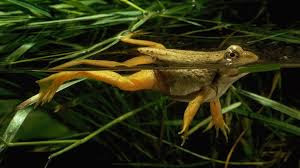
Bullfrogs are generally quite hardy animals and can get to be 10 years old in the wild. One bullfrog kept in captivity was said to have died at the age of 16!

Clancy's comment: Man, did you see the size of that bullfrog caught above? Wow!
I'm ...


Published on March 04, 2018 12:26
March 3, 2018
4 March 2018 - THE 15TH AMENDMENT
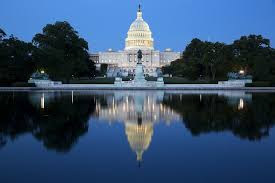
THE 15TH AMENDMENT
G'day folks,
The 15th Amendment, granting African-American men the right to vote, was adopted into the U.S. Constitution in 1870. Despite the amendment, by the late 1870s discriminatory practices were used to prevent African Americans from exercising their right to vote, especially in the South. It wasn’t until the Voting Rights Act of 1965 that legal barriers were outlawed at the state and local levels if they denied blacks their right to vote under the 15th Amendment.
What Is the 15th Amendment?
The 15th Amendment states: “The right of citizens of the United States to vote shall not be denied or abridged by the United States or by any State on account of race, color, or previous condition of servitude.”
The amendment goes on to state that “The Congress shall have power to enforce this article by appropriate legislation.”
Reconstruction
In 1867, following the American Civil War, the Republican-dominated U.S. Congress passed the First ReconstructionAct, over President Andrew Johnson’s veto. The act divided the South into five military districts and outlined how new governments based on universal manhood suffrage were to be established.
With the adoption of the 15th Amendment in 1870, a politically mobilized African-American community joined with white allies in the Southern states to elect the Republican Party to power, which brought about radical changes across the South. By late 1870, all the former Confederate states had been readmitted to the Union, and most were controlled by the Republican Party, thanks to the support of black voters.
In the same year, Hiram Rhoades Revels, a Republican from Natchez, Mississippi, became the first African American ever to sit in the U.S. Congress, when he was elected to the U.S. Senate. Although black Republicans never obtained political office in proportion to their overwhelming electoral majority, Revels and a dozen other black men served in Congress during Reconstruction, more than 600 served in state legislatures and many more held local offices.
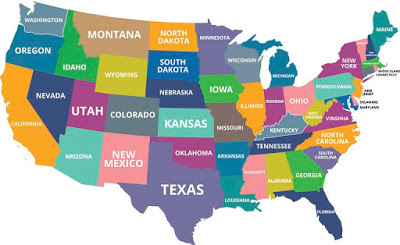
Reconstruction Ends
In the late 1870s, the Southern Republican Party vanished with the end of Reconstruction, and Southern state governments effectively nullified both the 14th amendment (passed in 1868, it guaranteed citizenship and all its privileges to African Americans) and the 15th amendment, stripping blacks in the South of the right to vote.
In the ensuing decades, various discriminatory practices including poll taxes and literacy tests—along with intimidation and outright violence—were used to prevent African Americans from exercising their right to vote.
Voting Rights Act of 1965
The Voting Rights Act of 1965, signed into law by President Lyndon Johnson on August 6, 1965, aimed to overcome all legal barriers at the state and local levels that denied African Americans their right to vote under the 15th Amendment.
The act banned the use of literacy tests, provided for federal oversight of voter registration in areas where less than 50 percent of the non-white population had not registered to vote, and authorized the U.S. attorney general to investigate the use of poll taxes in state and local elections.
In 1964, the 24th Amendment made poll taxes illegal in federal elections; poll taxes in state elections were banned in 1966 by the U.S. Supreme Court.
After the passage of the Voting Rights Act, state and local enforcement of the law was weak and it often was ignored outright, mainly in the South and in areas where the proportion of blacks in the population was high and their vote threatened the political status quo.
Still, the Voting Rights Act of 1965 gave African-American voters the legal means to challenge voting restrictions and vastly improved voter turnout.
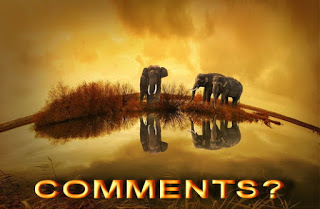
Clancy's comment: Mm ... Sounds very familiar. Blacks in Australia did not receive the right to vote until 1967. Mm ... A long time after the whites turned up here on Australia Day - 26th of January 1788.
I'm ...

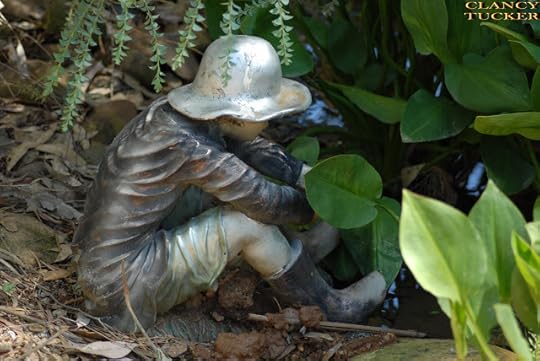
Published on March 03, 2018 12:48
March 2, 2018
3 March 2018 - MOVING PICTURES
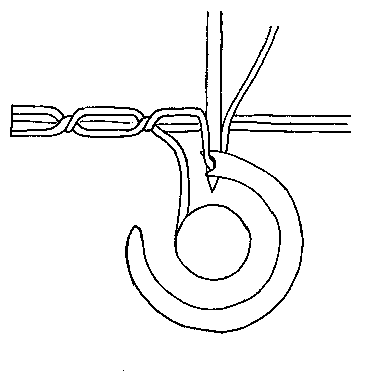
MOVING PICTURES
G'day folks,
Welcome to some more of those clever pictures that shake, rattle and roll.




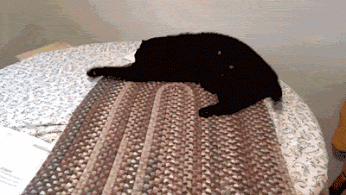



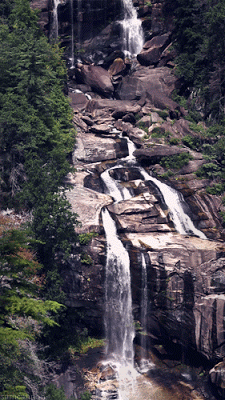




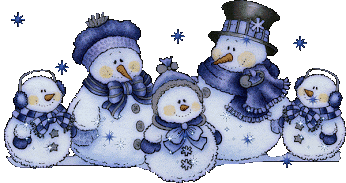



Clancy's comment: Some of these would appeal to you engineering types.
I'm ...
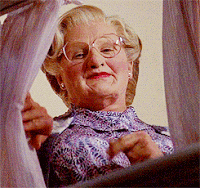

Published on March 02, 2018 11:59
March 1, 2018
2 March 2018 - OLD FASHIONED SLANG AND PHRASES

OLD FASHIONED SLANG AND PHRASES
G'day folks,
Welcome to some slang and old phrases, courtesy of John Green.

The goal here of course is to bring some of these awesome slang terms back into style so let's get started.
2. "Happy cabbage" is a sizeable amount of money to be spent on self-satisfying things. You know, like cabbage. This was the old days.
3."Pang-Wangle" is to live or go along cheerfully in spite of minor misfortunes, like Mickey Mouse who goes along cheerfully despite having a dog who's a friend and also a dog who's a dog and also, come to think of it, Thor, who goes on despite having Loki as a brother, and Yoda, who goes on despite Luke Skywalker's incessant whining.
4. "In the ketchup" means in the red or operating at a deficit.
5. "Flub the dub" means to evade one's doody—No, duty.
6."A pine overcoat" is a coffin.
7. "A butter and egg man," has nothing to do with breakfast preferences, it's actually, according to one dictionary, a wealthy but unsophisticated small-town businessman who acts like a playboy when he visits the big city.
8. "Zib" is a nincompoop.
9.To "give someone the wind" is to jilt a suitor, which now a days we call "The rose ceremony on The Bachelor."
10. The 1909 book Passing English of the Victorian Era: A Dictionary of Heterodox English Slang and Phrase captured some great phrases that were falling out of favor even back then. For instance, they called sausages "bags O' mystery" which they are. Meredith, what kind of sausages? Pork sausages? Another quarter for the staff pork chop party fund.
11. "Cop a mouse" meant to get a black eye—not to be confused with the terrifying Cockamouse from How I Met Your Mother.
12. "Don't sell me a dog" was a fancy way of saying "Don't lie to me."
13. A "door-knocker" was a type of beard, quote, "shaved leaving hair under the chin, and upon each side of the mouth forming with moustache something like a door-knocker." Damn hipsters.
14.A bald head was called a "fly rink."
15. A "gigglemug" was a habitually smiling face. Whereas, of course, a giggle mugshot is a picture of Robert Downey Jr. after he got arrested.
16. A "nose bagger" was, quote, "someone who takes a day trip to the beach.
He brings his own provisions and doesn't contribute at all to the resort the he's visiting."
17. If something or someone was "not up to dick," it was not healthy.
18. "Take the egg" means to win. I guess this was back in the days before, like, trophies. Although, come to think of it, an egg might be better than a Dundie.
19. "Whooperups" were, quote, "inferior noisy singers." I'm looking at you William Hung and also, you, me.
20.A "rain napper" was an umbrella and
21. your mouth was your "sauce box." Context is everything.
22. Alright I gotta keep my sauce box moving. Here's a multi-purpose bit of slang, according to the 1967 Dictionary of American Slang: "Pretzel-bender" can mean a peculiar person, a player of the French horn, a wrestler, or a heavy drinker. You add all of those meanings of "pretzel-benders" together and you have Meredith's future husband. Am I right, Meredith?
Meredith: Oh yes.
John: Yeah, I'm right.
23. So what happens when a pretzel-bender drinks too much? Well, we get to use some of our old slang terms for being drunk. Like "having your flag out", or
24. being "soapy-eyed", or
25. "full as a tick", or
26. "seeing snakes", or
27. "canned up", or
28. "zozzled." We enjoy the occasional zozzling. That's why we keep tequila on the Wall of Magic.
29.Or you could be "owled" or
30. "striped" or
31. "squiffed" or
32. "swacked."
33. Moving on to old phrases used to describe excessive heat, and they need a needed a lot of them in the days before air conditioning, "hotter than Dutch love in harvest."
34.You also frequently heard "the bear got him"; the bear in this case was heatstroke.
35. "Full of moist," and don't get mad at me for saying the word moist, Internet; it's just a word, all words are created equal, moist is just, it's a beautiful word, moist, I'm gonna say it one more time, moist.
36. And finally, lest you think our ancestors never worked blue, we have "hot as a half-f***ed fox in a forest fire." Do we have a half-f***ed fox up on the wall here? No? No? There's Linus. Fat lot of good he does us.

Clancy's comment: Thanks, John. Mm ... It's another world, eh?
I'm ...
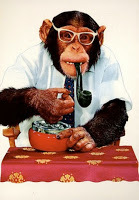
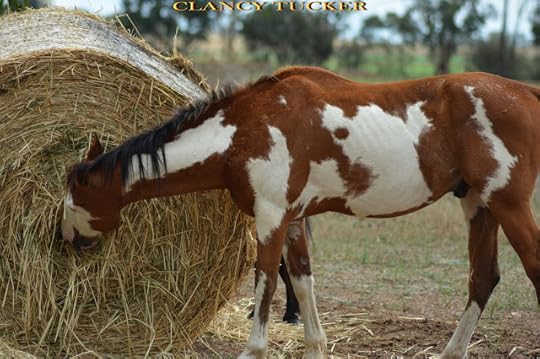
Published on March 01, 2018 12:54
February 28, 2018
1 March 2018 - 'LOVE YA WORK!' by CLANCY TUCKER - TOP BOOK REVIEW
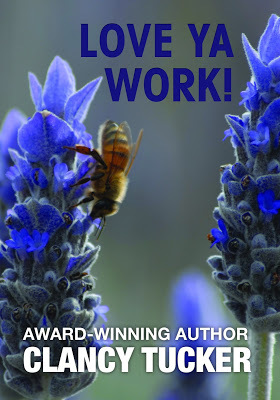
'LOVE YA WORK!' by CLANCY TUCKER - TOP BOOK REVIEW -
G'day folks,
My latest book, my tenth, has just been reviewed by one of Australia's top book reviewers, Anastasia Gonis, and included on the 'Kids' Book Review' website. Many thanks to Anastasia and also Kids' Book Review for promoting Australian authors. Love ya work!
So, here it is ...

This impressive collection by award-winning author, activist and humanitarian Clancy Tucker, features unpublished short stories and personal anecdotes from his journey through life ‘on the run’. It includes some bush poems that have appeared in previous publications such as Gunnedah Hero.
The stories provoke laughter and tears. They are diverse and full of atmosphere, and draw you into the settings so well-described I felt I was reliving the times. They contain romance, family conflict and resolution, love, and life-changing random acts of kindness by, and to, strangers and others, such as in The Five Dollar Circus.
Many of the true stories are taken from Clancy’s own life experiences, as are the anecdotes that he relays with such confidence and strength of memory, which shows the impact those experiences have had on him. Other stories are simply stories. Each has a specific theme that reflects the human and inhuman side of life.
Clancy has travelled extensively, documenting life through his camera lens, within Asia, the United States and countless other countries. This travel has enriched his life and informed his world view. His experiences are represented in his writing. They reflect his humanitarian attitude and generosity towards others less fortunate. Examples of sharing what you have are represented in stories built with dignity and compassion.
Then there are his bush poems. They are breakers between long and short stories, and anecdotes.
This is a book to pick up and put down at leisure, but not before you have read it all first. It’s entertaining and reflective; thought-provoking and thoughtful. The stories are about life before computers, when things were clearer and unwritten laws on social conduct and manners were passed on to others by example.
Many will cherish this collection which is presented in Clancy’s inimitable style, through his unique way of seeing life, and by writing it as it is. Love Ya Work, Clancy!
BOOK DETAILS:
Title: Love Ya Work!Author: Clancy Tucker Publisher: Clancy Tucker Publishing $28.00 in Aust. (available in eBook)Publication Date: January 2018Format: PaperbackISBN: 9780994601001For ages: 12+Type: Short Stories, Poems, AnecdotesReviewed by Anastasia Gonis
BOOK'S BLURB:
Clancy Tucker is an award-winning author, photographer, poet and screenwriter who writes young adult fiction. He has lived in four countries, speaks three languages, has photography published in the USA, photographic work registered with the International Library of Photography, and included in literary magazines. He has also written more than 140 short stories and an anthology of bush poetry.
Clancy’s been short-listed, commended and highly-commended in many writing contests, and had short stories and poems published in literary magazines. He has been a political speechwriter, public servant, farmer and vocal advocate for human rights, social justice and independent authors. Clancy has worked with street kids, currently mentors aspiring writers, and draws on life’s experiences to write stories for young adults.

KIDS' BOOK REVIEW
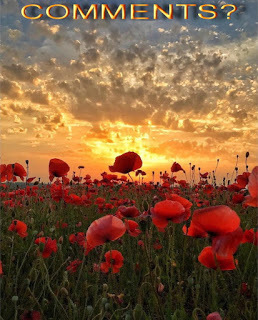
Clancy's comment: I'm blushing. But, seriously, if you are keen to read this book, just head up to the right hand side of this page and you can purchase it as a paperback or e-book. Trust me, there will be something in this book that captures you.
I'm ...


Published on February 28, 2018 12:30
February 27, 2018
28 February 2018 - VICTORIAN HUMAN HAIR SHRINES
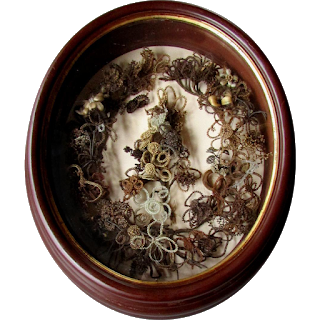
VICTORIAN HUMAN HAIR SHRINES
G'day folks,
Here is something that people became involved in during the Victorian era.
M eander through enough Sunday flea markets, and you’re bound to come across a Victorian grief shrine every now and again.
They’re quite hypnotising objects, with their lacquered wood frames and bulbous glass encasing tiny flower-baskets, spindly trees, and elaborate landscapes. Take a closer peak, and you’ll realise you’re looking at a shrine made of someone’s actual hair.
Making shrines and jewellery out of human hair was already a hot hobby in the Victorian age. Exchanging locks of hair with your friend, family member, or lover was as common an act of affection as, say, liking a pal’s Instagram pic today.

Even Napoleon got in on the trend, and requested that his hair be woven into bracelets for his relatives to remember him after his passing. But today, we’re honing-in on the hair jewellery and shrines made in memoriam of loved ones. On that subject, Queen Victoria is a good place to start.
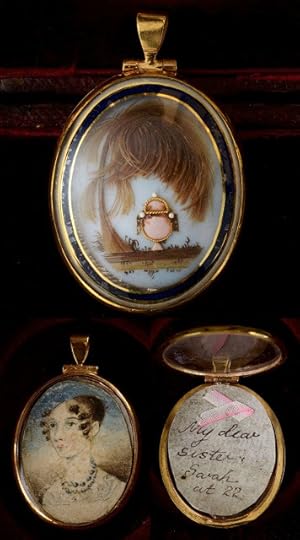
Grief simply set the tone for the final years of the Victorian era in both the present-day European Union and United States. In 1861, the unexpected death of the Queen’s husband, Prince Albert, took an immense toll on the Monarch. Suddenly, grieving the loss of her husband’s death became a second full-time job.

Meanwhile, on the other side of the Atlantic, the American Civil war was under way. To this day, the war remains one of the most intense periods of domestic carnage and loss in the U.S. The act of crafting a grieving shrine out of the locks of a loved one’s hair was not only cathartic, but created a tangible memory of sorts for loved ones lost in battle.
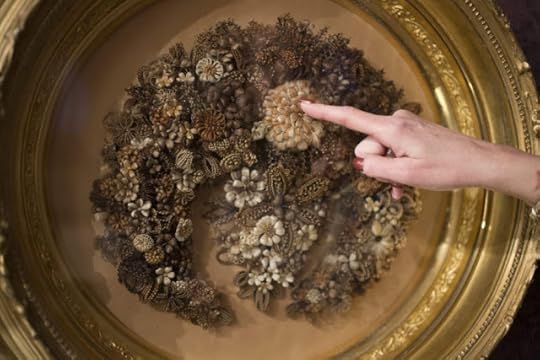
Families would go to great lengths to have craftspeople make up intricate scenes paying homage to their kin, creating heirlooms for generations to come. The act even became a rather competitive game, with each member of the community seeing whose shrine could be biggest.

That’s not to say there were not smaller, more portable efforts made, namely in the form of rings and brooches. According to mourning-jewellery specialist Erica Weiner, “before photography came along, [mourning jewellery] was the main way that people remembered their departed loved ones.

Clancy's comment: Mm ... And then mobile phones and computer games came along ...
I'm ...


Published on February 27, 2018 12:44
February 26, 2018
27 February 2018 - NATALIE WANNER - GUEST BLOGGER

NATALIE WANNER- GUEST BLOGGER -
G'day folks,
Today, I welcome and interview another writer and blogger from the USA.
Welcome, Natalie ...
1. TELL US A LITTLE ABOUT YOUR BLOG’S JOURNEY.I developed ‘Crazy on the Inside’ as a journal to express my anxieties, fears and concerns about becoming a typical suburban wife and mother. I struggled with the mundane and monotony of everyday life. I started writing the blog about a year after I opened my marriage and found it was the best therapy to let go of other’s expectations and live my own life. It’s become my platform for my book “Married and Single at the Same Time” and remains an outlet for me to tell my journey and the ongoing struggle and freedom of breaking out of the female box.
2. WHAT IS THE AIM OF YOUR BLOG?Initially I created my blog for myself as an outlet to polish my writing skills, and although that still holds true today I really enjoy the feedback I get about how my story makes others think about their own. Now, I just want to tell my story…but everyone is welcome to read.
3. WHAT INSPIRED YOU TO CREATE A BLOG?My love of writing and the want to share my story as a way to break away from the ‘norm’ and develop a new narrative to my life.
4. WHAT DO YOU ENJOY MOST ABOUT BEING A WRITER?Being able to tell my own story in my own words. Writing allows me to express myself in a way that works for me and assists me in bringing out my creative side to paint an even more vivid picture for my readers.
5. WHAT IS THE HARDEST THING ABOUT BEING A WRITER?When I can’t write a sentence or, I’ll find a few hours in a day and more times than not I’ll stare at my computer screen or out the back window of my house trying to find something interesting to say.
6. WHAT WERE YOU IN A PAST LIFE, BEFORE YOUR BLOG?I worked with high-risk federal offenders in the community for almost a decade. I worked with a not for profit society that help those affected by crime. I worked in the criminal justice field hoping for law school but when I was able to witness the broken system first hand I knew it wasn’t for me. Now I can’t believe I was ever on that path…writing unleashed my creative being and the rest is history.
7. WHAT DO YOU ENJOY MOST ABOUT PROMOTING OTHERS?Being supportive and excited for others who are in the same space that are also just trying to get their work and name out into the universe.
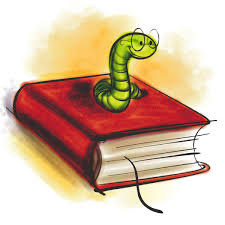
8. WHAT ARE YOU WORKING ON AT THE MOMENT?I am working with my agents and editor to polish my book, “Married and Single at the Same Time”. I wrote it over the span of two years with a coach while taking a creative writing class in NYC one day a month.
9. WHAT INSPIRES YOU?My children, my son, Bailey, is 20 years old and in his third year at the university. He is the most passionate and driven individual I have had the pleasure to know…let alone give birth to.
Everything he does, he does with heart. My daughter, Fiona, she is five years old and finding her way through the world. She constantly reminds me that it’s more important to live the way you want and be incredible happy. She amazes me with her independence and kind heart. Together they show me fearlessness, confidence and happiness. Imagine being able to live without care of what other’s think or how society thinks you should be…that is ultimate freedom and they inspire me to reach for that.
10. ARE YOU A WRITER?I am!
11. WHAT GENRE DO YOU WRITE?I write narrative non-fiction, about my life’s experiences.
12. DO YOU HAVE ANY TIPS FOR NEW WRITERS?Fuck the so-called rules…just write.
13. DO YOU SUFFER FROM WRITER’S BLOCK?It doesn’t happen often and I think it’s because I write about my experiences but I have been blocked when trying to set a scene or create a conversation.
14. DO YOU HAVE A PREFERRED WRITING SCHEDULE?Morning, I love to write in the early morning. But I am not above writing at anytime my five year old doesn’t need a second for Barbie’s.
15. DO YOU HAVE A FAVOURITE WRITING PLACE?My kitchen table, I am surrounded by windows and sky.
16. WHAT IS YOUR GREATEST JOY IN WRITING?Being able to express myself in my own way, without regret or apology. The freedom writing gives me is incredible.

17. WHO IS YOUR FAVOURITE AUTHOR AND WHY?Sylvia Plath, when I read her words I can feel her pain and that connects me to her in a way that keeps me coming back to her.
18. WHAT’S THE GREATEST COMPLIMENT YOU EVER RECEIVED FROM A READER OF YOUR BLOG?I had an editor tell me that I have a gift of being able to pull others emotions out through my words. That was powerful to me because it’s important to connect with someone’s voice and words in order to really understand the story.
19. WHAT WAS THE WORST COMMENT FROM A READER?It’s never about my writing; it’s about my lifestyle and how they don’t agree with it because I am a mother…oh well.
20. WRITERS ARE SOMETIMES INFLUENCED BY THINGS THAT HAPPEN IN THEIR OWN LIVES. ARE YOU?Yes, of course. As a non-fiction writer I write about my life, or this phase of it, I am constantly picking things out of my past to paint my story.
21. OTHER THAN WRITING, WHAT ELSE DO YOU LOVE?I love traveling, reading and volunteering at my daughter’s school. I have a lot of passions but those are definitely at the top.
22. IF YOU HAD AN OPPORTUNITY TO SPEAK TO THE ENTIRE WORLD, WHAT WOULD YOU SAY?Be kind, don’t judge, help when you can and try to never cause pain. Don’t let society choose your path and live the life you desire because no one cares so long as you are kind
23. DESCRIBE YOUR PERFECT DAY.Anytime my words are flowing and my family is happy is a pretty perfect day, but I guess selling my book and moving to NYC would be a very close second.
24. WHAT ARE YOUR GREATEST ASSETS AS A WRITER?I’m an emotional and dramatic being and that feeds my writing and helps to connect my readers with their own emotions.
25. IF YOU WERE STUCK ON A DESERT ISLAND WITH ONE PERSON, WHO WOULD YOU LIKE IT TO BE? WHY?My husband, Daniel, he is goodness in every way possible. His love and respect for me is infinite. He makes me laugh like nothing else and supports my choices. With him I know I will be challenged and never judged, he is my greatest friend.
26. WHAT ARE YOUR PLANS FOR THE FUTURE?Currently co-writing my second book and polishing my first so it can head to publishers. I just want to write and hopefully one day I will make the move to New York City with my family.

27. WHAT FIVE BOOKS WOULD YOU TAKE TO HEAVEN?The Bell JarThe Red Tent1984Catcher in the RyeThe Sun Also Rises
28. ANYTHING YOU’D LIKE TO ADD?I wrote my book three times for over two years and queried over 200 agents before I got a ‘YES’…the ‘yes’ is not what made me a writer, it just meant I had more support as a writer. My story is the legacy I will leave for my children and I am grateful that I am able to tell it in my own words.

BLOG
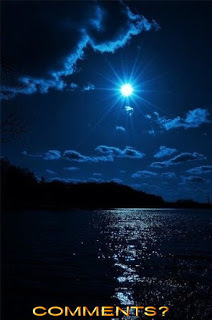
Clancy's comment: Thank you, Natalie. Good luck with the book and future sales.
I'm ...

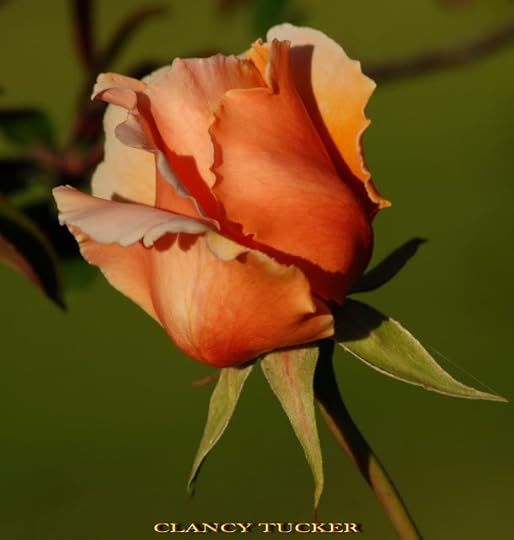
Published on February 26, 2018 12:47
February 25, 2018
26 February 2018 - INTERESTING FACTS ABOUT THE ECHIDNA
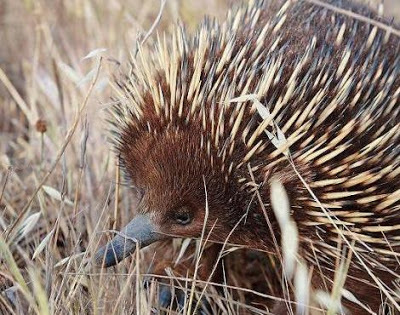
INTERESTING FACTS ABOUT THE ECHIDNA
G'day folks,
Welcome to some facts about one of the many weird and wonderful creatures that share Australia with us.
Echidnas are known better as spiny anteaters, although they are not related to them, besides that fact that both anteaters and echidnas eat ants and termites. The echidna is found in parts of New Guinea and Australia.

The echidna has a long tongue around 18cm long that can whip in and out of its mouth at incredible speeds. This helps the echidna to forage for ants an termites.

The echidna was named after a monster in Greek mythology! The echidna can dig incredibly well due to its long claws, meaning that echidna are able to escape danger by digging straight down.

The echidna is a small mammal and the echidna has a long snout that acts as both the mouth and nose of the echidna. The echidna has no teeth and the echidna feeds by tearing soft logs apart and then using its long, sticky tongue to feed on the ants and termites that inhabit the log.
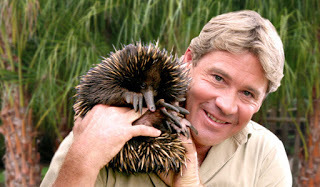

The echidna is a very special mammal and, along with the platypus, the echidna is the only other egg-laying mammal in the world.
The echidna lays eggs that have a soft shell and are kept in the pouch of the female echidna until the eggs hatch in a couple of weeks. The young echidna remains in the pouch of the female echidna for around 50 weeks, when the baby echidna has grown spikes. The mother echidna then transfers the young echidna to a nursery burrow and returns every few days to feed the baby until it is around seven months old.

Clancy's comment: I've seen many of these in the Australian bush whilst fishing in remote rivers and streams. They sure look very ancient.
I'm ...
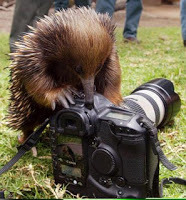

Published on February 25, 2018 12:21
February 24, 2018
25 February 2018 - SECRET MUSEUM IN NOTTING HILL TUBE STATION
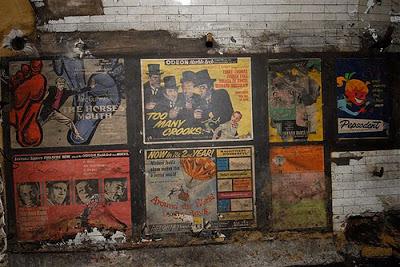
SECRET MUSEUM IN NOTTING HILL TUBE STATION
G'day folks,
Here is yet another discovery below ground, but this time in London.
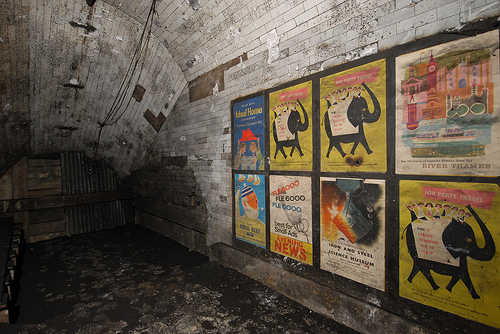
L ittle do London tube passengers know as they travel through the maze of the underworld, what may lie just on the other side of a wall. As crowds of vintage and antique lovers leave the train at Notting Hill Gate for a day of treasure hunting at Portobello market, they’re probably unaware of the most secret vintage collection of them all.
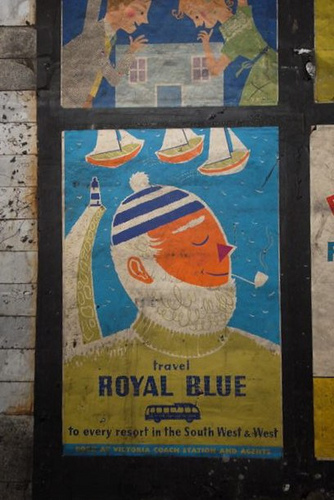
In the late 1950s, the Notting Hill tube station underwent a major overhaul when the old lifts that transported passengers to and from the train platforms were abandoned and replaced with modern escalators. The passageways to the lifts were sealed off too and everything within them was subsequently frozen in time.
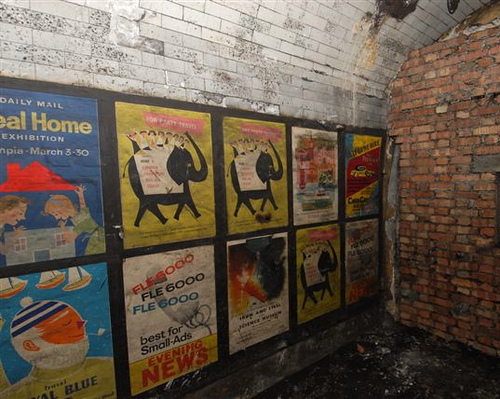
In 2010, some new routine works were underway when the sealed-off passageways were re-discovered after 50 years, revealing a mini museum of well-preserved vintage posters from the post-war era.
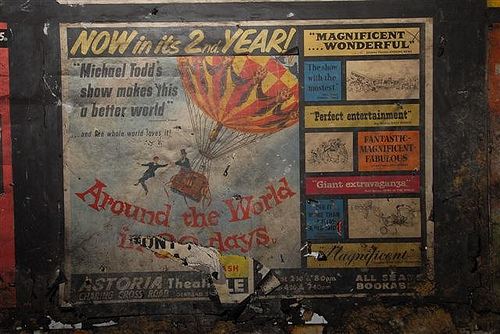
The movie posters, as seen in the first photograph, give us a more accurate estimate of when exactly the tunnels were sealed. The Horse’s Mouth and Too Many Crooks were both released in 1958. The old white tiling hasn’t held up too badly either and would date back to 1900 when the deep-level Central Line opened in the station.
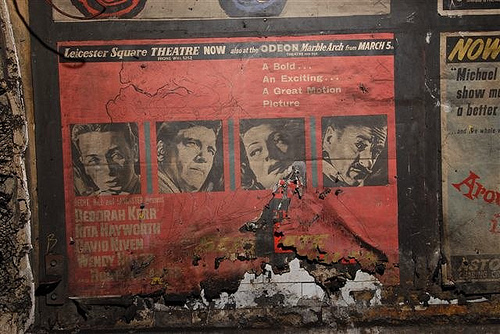
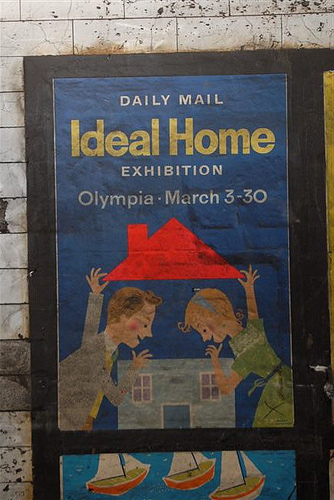
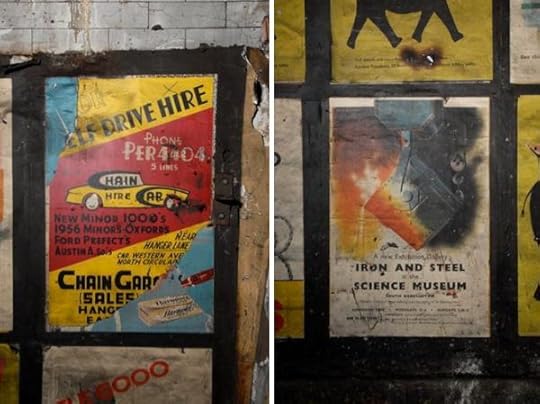
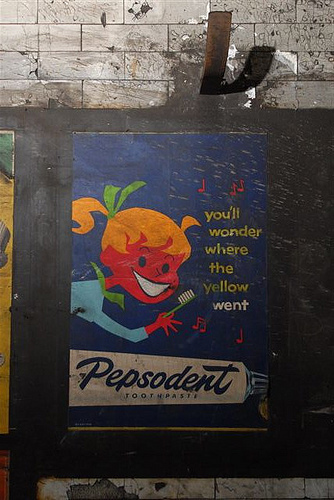


Clancy's comment: Well, there ya go. I wonder what else we will discover below ground. Maybe gold.
I'm ...


Published on February 24, 2018 13:22



